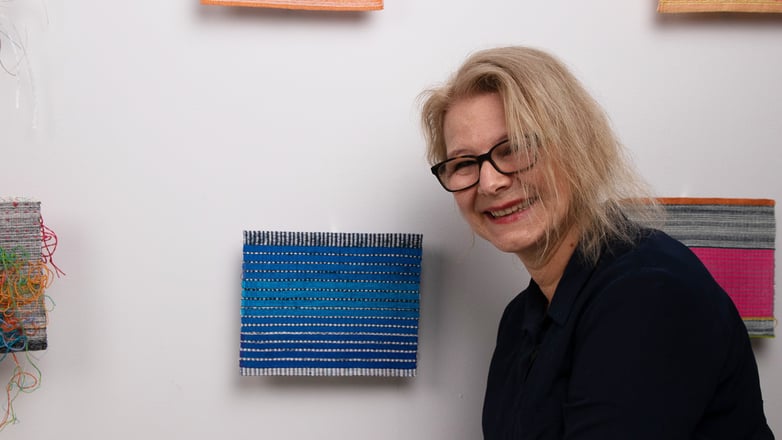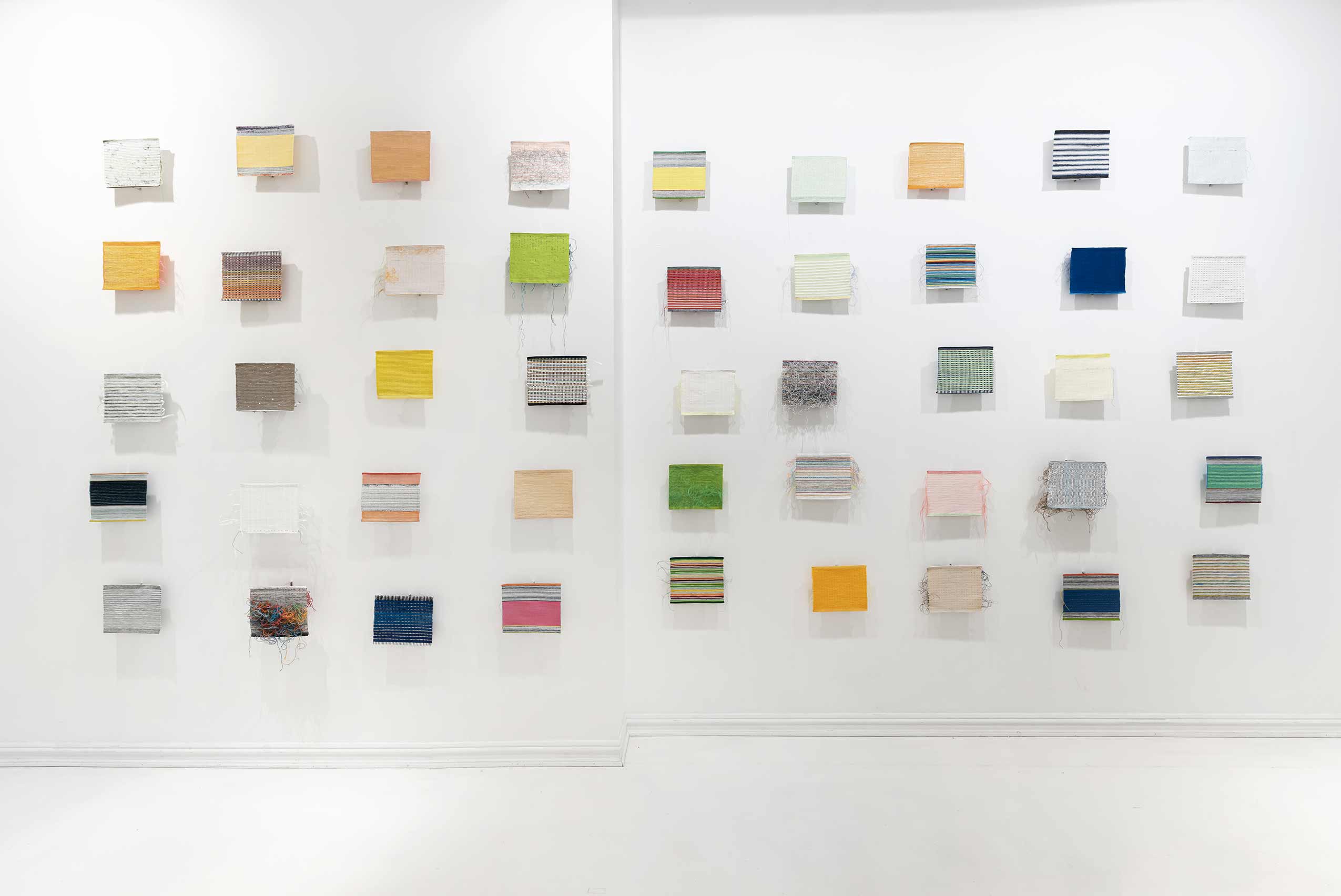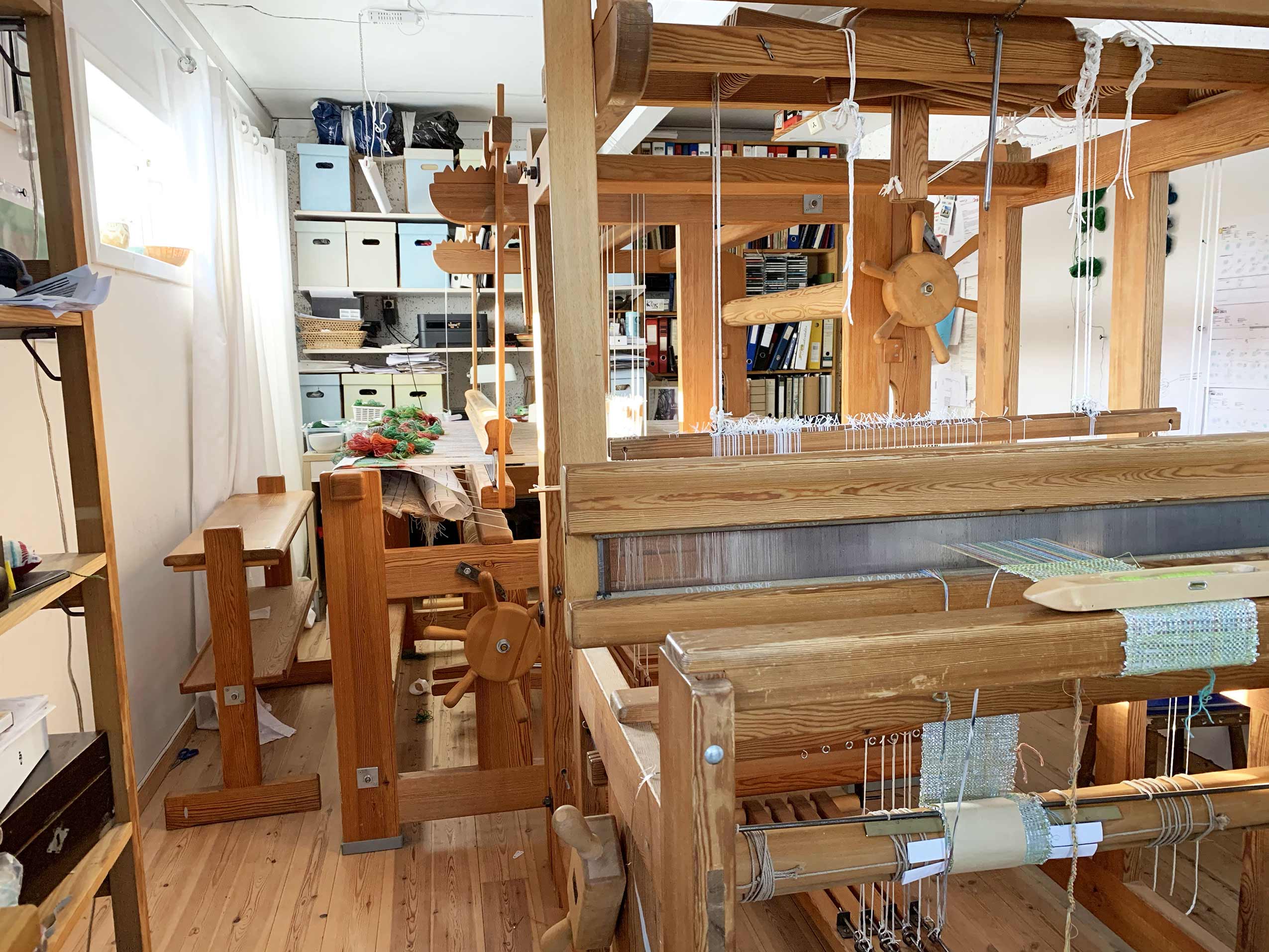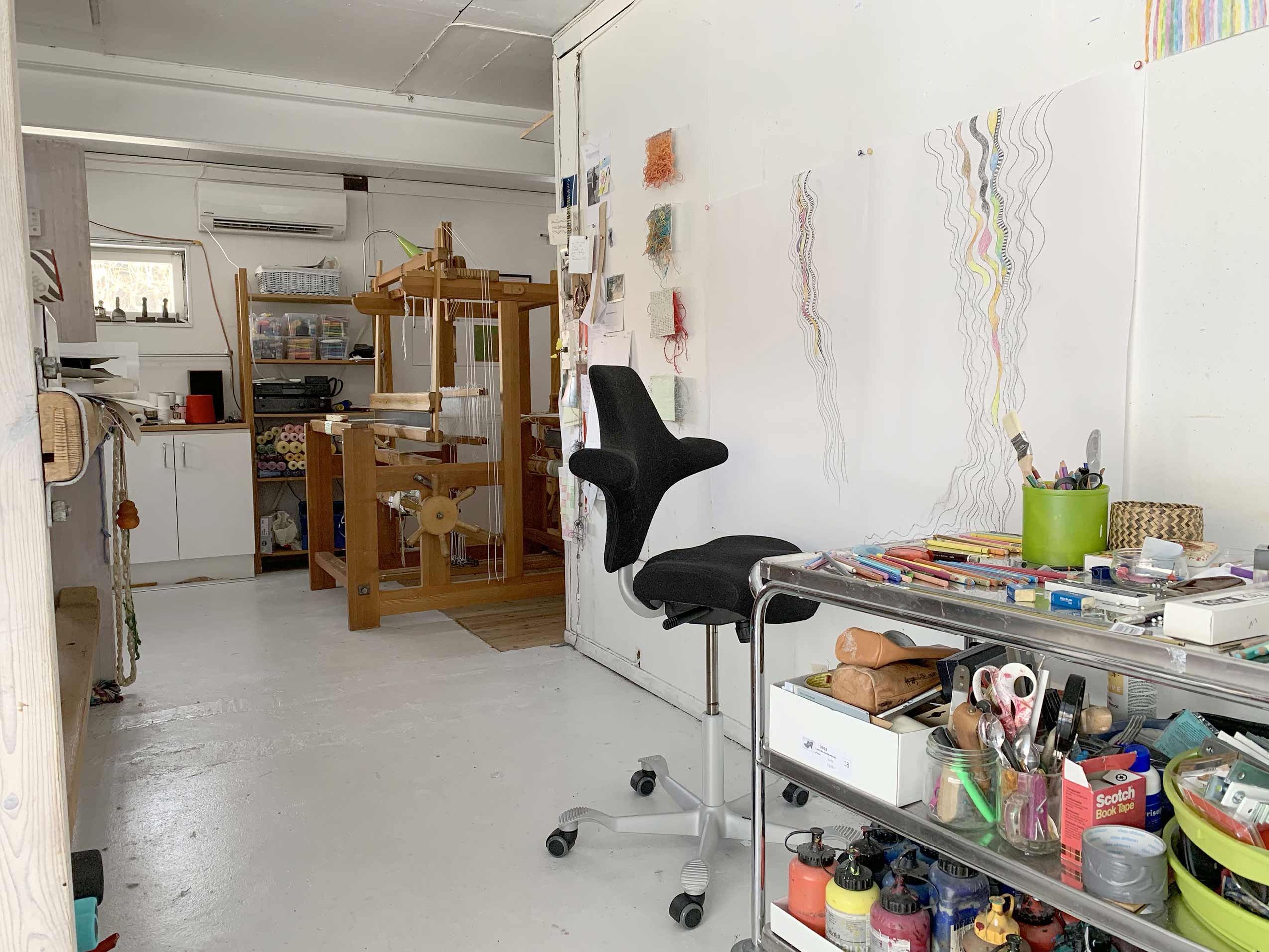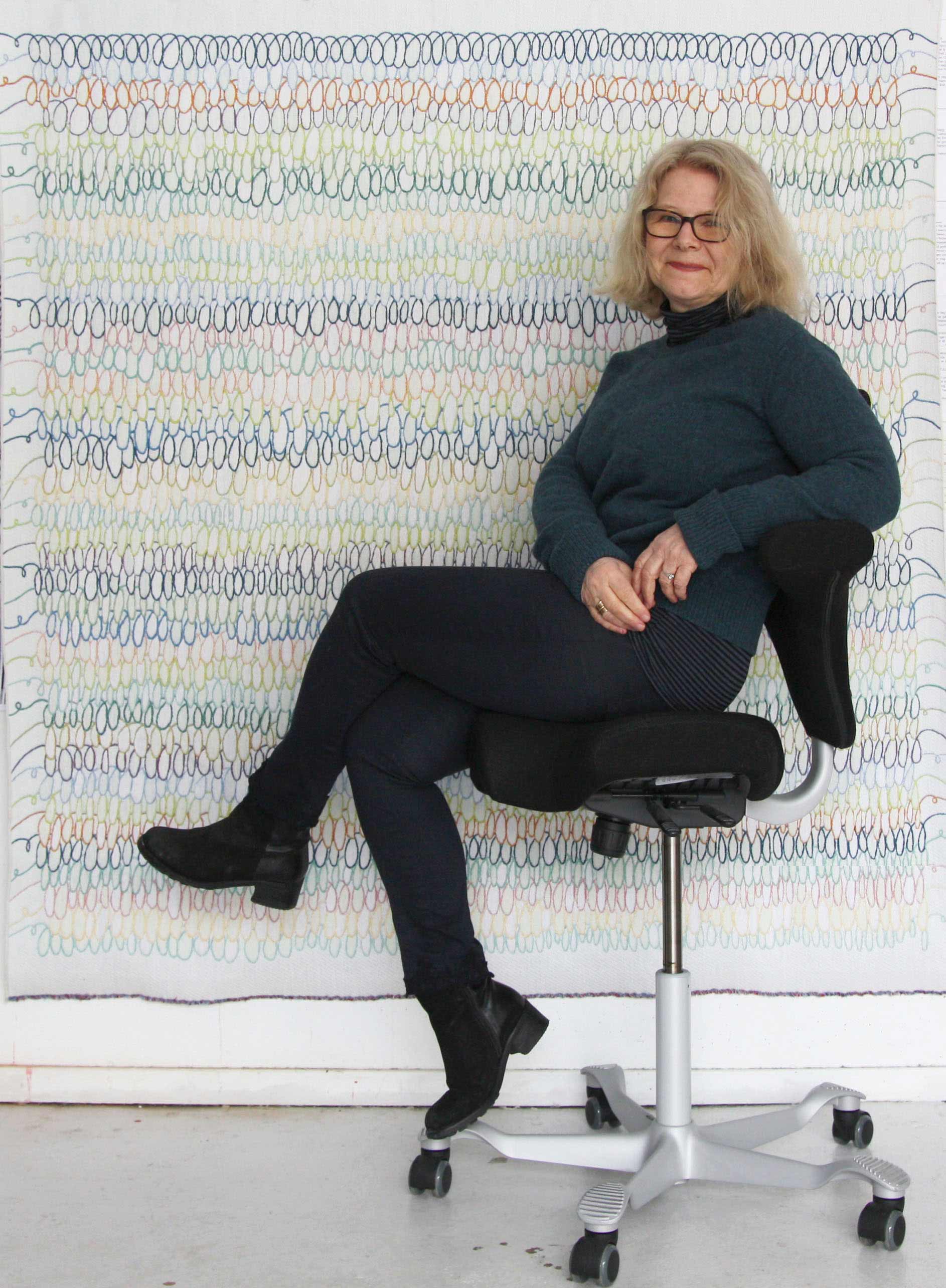Solveig Aalberg is a unique artist based in Oslo. Since graduating from the National College of Art and Design (today a department at the Oslo National Academy of the Arts) her passion has been weaving, with textile art in all it's complexity the central feature across her impressive portfolio.
Whether creating for international exhibits or commissions for cathedrals and state buildings, her individual style shines through, and she is always looking for new and exciting ways to express her style.
Solveig is a big fan of the HÅG Capisco for many years, we caught up with Solveig to learn more about her affinity with textiles and check out her studio workspace.
Hi Solveig, what is it about textile that you find so special?
As a person I have always been curious, expressed. Even as a child, it was natural for me to express myself through sewing and embroidery - as a youth I designed my own clothes. Eventually, I learned to weave, drawing became part of the process.
Colours and textures are important to me. I often dye the yarn I use, twist threads together, weave and sew with stitches. I also work in periods with digital aids, then I draw drafts in photoshop and get these done mechanically in a digital jacquard web in the Netherlands.
Do you have any particular themes or ideas that run throughout your work?
System and lack of system are topics I work with. I am inspired by mathematics, poetry, and the rhythm, intensity and power of music. I read the world around me through an organization of structures and repetitions. I transfer this to expression in textile materials. Other visual artists' immersion, energy and intensity in their work can also be sources of inspiration for me.
